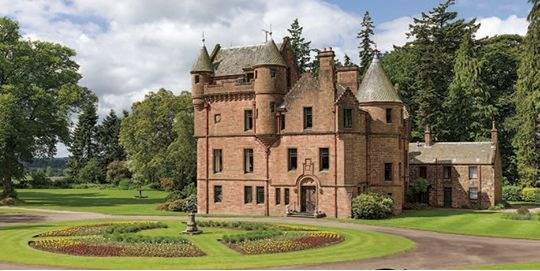■ Looking ahead, realistic pricing will be key to aligning buyer and seller expectations, against a backdrop of political and taxation challenges.
Quality of life and value for money drives demand and growth in Scotland’s heartland
■ The market across the heartland of central Scotland is witnessing steady growth and continues to attract second home owners and downsizers from outside the region.
■ Whilst there has been no significant growth in values, it is the increase in the level of transactions that suggests a strengthening market.
.jpg)
FIGURE 1Residential activity across Scotland’s heartland is exceeding the long-term average
Source: Registers of Scotland
Central Scotland residential market
The heartland of central Scotland, which includes Clackmannanshire, Fife, Perthshire and Stirlingshire is witnessing steady growth. The annual number of transactions in this region increased by 2% by the end of March this year compared to 1% across Scotland as a whole. Annual prime transactions reached 458 by the end of March this year. This figure is 14% higher than the five-year annual average.
Prime values in hotspots such as Bridge of Allan, Dunblane, Dollar, St Andrews and Auchterarder increased during the first quarter of this year, compared to the same period last year. High quality properties in these locations continue to attract strong interest, due to their excellent schools, transport links and services.
Prime values in country areas on the other hand have remained stable. Country houses now offer extraordinary value for money compared to properties both elsewhere in the UK and in Edinburgh. Wealthy home-grown buyers and those from outside Scotland are beginning to take advantage of this affordability, particularly in locations within easy reach of the cities. The weak sterling has contributed to a surge in the number of wealthy international buyers looking for trophy properties in Scotland.
The overall central Scotland market was led by Clackmannanshire, where transactions increased annually by 16%, albeit from a low base.
House building across Perthshire more than doubled last year, underpinning the overall 5% annual growth in transactions. Perthshire’s activity levels have picked up significantly, particularly in the Loch Tay area and the countryside surrounding Perth.
Residential activity in Fife remained stable, although the new build market as well as price bands from £200,000 to £400,000 and £600,000 to £800,000 bucked the trend. Despite the introduction of the extra 3% Land and Buildings Transaction Tax for additional properties, the market remains resilient in holiday home hotspots such as Elie and St Andrews.
While the overall number of residential transactions in Stirlingshire fell slightly, a positive reversal of fortunes took place in its prime market. The 124 prime transactions recorded in Stirling was the highest annual figure in five years.
Million pound market
The million pound market, which is a small but important sector of the central Scotland market, saw 19 such transactions during the year ending March 2017. This is slightly higher than the 16 annual average over the last five years.
Eight of the million pound transactions were across Perthshire, mainly in the Auchterarder area. The selling price achieved by Savills for Tower of Lethendy in Perthshire (pictured below) was the highest for a residential property in Scotland since the peak of the market in 2007. Meanwhile, Stirlingshire witnessed seven transactions, which is an annual record for this area.

▲ Tower of Lethendy (Offers Over £4.6 million) in Meikleour, Perthshire sold at the end of 2016, achieving the highest residential sale price in Scotland since 2007
Outlook
As the process to leave the EU is unfolding, prime values in Scotland will remain stable in the short term due to market sensitivity. However, price growth will continue to take place in the market hubs of Edinburgh and Glasgow.
Across Scotland, we expect strong demand for high quality stock in areas with good schools and transport links to the market hubs. Realistic pricing will be key to aligning buyer and seller expectations. Over time, greater political and economic stability will boost sentiment and we expect this to provide the trigger for a recovery in values.